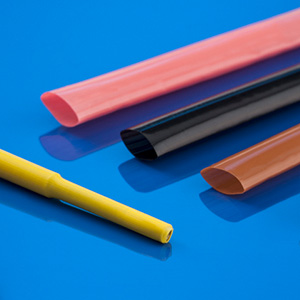 When it comes to protecting and insulating electrical connections, heat shrink tubing is an indispensable tool. This versatile material offers both insulation and protection, ensuring the longevity and safety of electrical systems. In this guide, we’ll delve into the benefits of insulation with heat shrink, how to use it effectively, and why it’s a must-have for any electrical project.
When it comes to protecting and insulating electrical connections, heat shrink tubing is an indispensable tool. This versatile material offers both insulation and protection, ensuring the longevity and safety of electrical systems. In this guide, we’ll delve into the benefits of insulation with heat shrink, how to use it effectively, and why it’s a must-have for any electrical project.
What is Heat Shrink Tubing?
Heat shrink tubing is a polymer-based tube that contracts when exposed to heat, snugly wrapping around wires, cables, and other components. It provides a protective layer that shields against environmental factors, mechanical wear, and electrical interference.
Benefits of Insulation with Heat Shrink
- Enhanced Electrical Insulation
- Heat shrink tubing offers excellent dielectric strength, preventing electrical shorts and protecting against voltage spikes. This makes it ideal for insulating exposed wires and connections, ensuring your projects are safe and reliable.
- Environmental Protection
- Heat shrink provides a robust barrier against moisture, dust, and chemicals, which can cause corrosion and degradation of electrical components. This protection is particularly crucial in harsh environments where standard insulation may fail.
- Mechanical Protection
- By tightly conforming to the shape of the underlying component, heat shrink tubing adds a layer of mechanical protection. It guards against abrasion, impact, and vibration, which can damage wires and connections over time.
- Versatility
- Available in various sizes, colors, and materials, heat shrink tubing can be used for a wide range of applications. Whether you’re working on automotive wiring, home electrical repairs, or large-scale industrial projects, there’s a heat shrink solution to meet your needs.
- Aesthetics and Organization
- Beyond its functional benefits, heat shrink tubing also helps in organizing and labeling wires, improving the overall appearance of your projects. Using color-coded tubing can simplify troubleshooting and maintenance, making it easier to identify specific wires and connections.
How to Use Heat Shrink Tubing for Insulation
- Select the Right Size
- Choose heat shrink tubing with a diameter slightly larger than the wire or component you need to insulate. Most heat shrink tubing shrinks to about half its original diameter, so ensure it will create a snug fit once heated.
- Cut to Length
- Measure and cut the tubing to the desired length, leaving some extra room for a secure fit. It’s better to have a bit more tubing than not enough, as you can always trim the excess after shrinking.
- Position the Tubing
- Slide the tubing over the wire or component before making any connections. If you’re insulating a soldered connection, wait for the solder to cool before positioning the tubing to avoid premature shrinkage.
- Apply Heat Evenly
- Use a heat gun or a specialized heat shrink tool to evenly apply heat to the tubing. Start at one end and work your way to the other, ensuring the tubing shrinks evenly around the wire or component. Avoid using open flames, as they can damage the tubing or underlying materials.
- Inspect the Result
- After the tubing has fully shrunk, inspect it for any gaps or bubbles. The tubing should be tightly sealed and free from defects, providing a smooth, continuous layer of insulation.
Applications of Heat Shrink Tubing
- Automotive Wiring: Protect and organize wires in cars, trucks, and motorcycles, where exposure to heat, vibration, and moisture is common.
- Marine Electrical Systems: Insulate and safeguard wires from saltwater and harsh marine environments.
- Home Electronics: Prevent short circuits and wear in home appliances, audio systems, and DIY electronics projects.
- Industrial Equipment: Use in heavy machinery and industrial settings to protect against environmental hazards and mechanical damage.
Conclusion
Insulating with heat shrink tubing is a simple yet effective way to enhance the durability and safety of your electrical projects. Whether you’re a professional electrician or a DIY enthusiast, incorporating heat shrink tubing into your toolbox can save you time, money, and potential headaches down the road. With its wide range of applications and easy-to-use nature, heat shrink tubing is a small investment that pays off in big ways.
For more tips on insulation and electrical projects, explore our other guides and product recommendations to ensure your work is top-notch.


